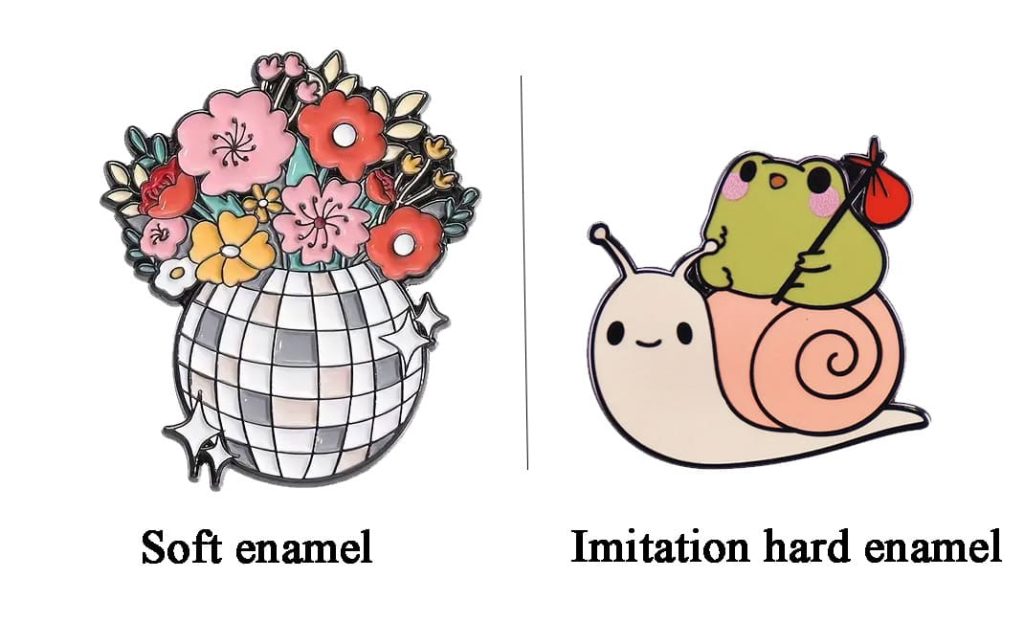When it comes to enamel pins, two of the most commonly used finishes are imitation hard enamel and soft enamel. These two types of enamel offer distinct looks and characteristics, making them popular in different design contexts. Understanding the difference between the two can help you choose the right type of enamel for your pins, keychains, or other metal-based accessories.

What is Hard Enamel?
Hard enamel, also known as cloisonné or epoxy enamel, is a type of enamel where the enamel is heated and fired to a high temperature, resulting in a smooth, glass-like finish. During production, the enamel is carefully applied to the recessed areas of the design, and after firing, it becomes completely level with the metal surface. The result is a polished, sleek, and durable finish that is resistant to scratches and fading.
One of the distinguishing features of hard enamel pins is their uniform, even appearance. The enamel colors are filled in and fired until the surface is smooth, leaving no raised edges between the metal lines and the enamel. This makes hard enamel pins feel dense and solid in hand. The process of creating hard enamel pins is more time-consuming and expensive, but the final product tends to be of higher quality and more durable.
What is Soft Enamel?
Soft enamel, on the other hand, is a different process where the enamel is applied to the recessed areas of the design, but it is not fired at as high of a temperature as hard enamel. The result is a textured finish with raised metal borders and slightly lower enamel levels. This gives the pin a more tactile feel, as the enamel sits slightly below the surface of the metal lines.

Soft enamel pins have a more pronounced, vibrant look because the enamel retains its texture and does not settle as smoothly as hard enamel. This finish can create a more dynamic, colorful effect with deeper contrasts between the raised metal lines and the recessed enamel. Soft enamel is also less expensive to produce, making it a popular choice for bulk orders and designs where a more casual or artistic aesthetic is desired.
Key Differences Between Imitation Hard Enamel and Soft Enamel
- Appearance: Hard enamel has a smooth, glossy finish where the enamel is level with the metal lines, while soft enamel has a textured look with raised metal borders and lower enamel levels.
- Durability: Hard enamel is generally more durable and scratch-resistant due to its smooth, solid surface. Soft enamel is more prone to scratching and fading because the enamel sits below the metal lines.
- Cost: Hard enamel is more labor-intensive and expensive to produce, making it pricier than soft enamel. Soft enamel is less expensive and often chosen for designs where cost is a concern.
- Finish Quality: Hard enamel provides a more polished, high-quality finish, while soft enamel tends to have a more rustic, handmade aesthetic.
Which One to Choose?
Choosing between imitation hard enamel and soft enamel ultimately depends on the style, quality, and price point you’re aiming for in your project. If you’re looking for a high-end, sleek, and durable finish, hard enamel is the way to go. However, if you prefer a more textured, colorful, and budget-friendly option, soft enamel is a great choice.
Each type of enamel offers its own advantages, and understanding the difference between them allows you to make an informed decision when designing your enamel pins or other custom accessories.
In the end, whether you opt for the refined elegance of hard enamel or the bold vibrancy of soft enamel, both options can create beautiful and lasting designs that will stand the test of time.